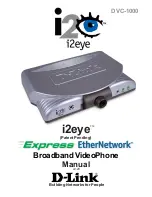
132
Glossary
Gigaset SL75 WLAN / en / A31008-M700-B112-1-7619 / glossary.fm / 24.4.06
Ve
rs
ion05.
08.2
005
IP Address
Unique address within a network. One
IP address is assigned to each interface.
On the
Internet,
domain names are
normally assigned instead of IP
addresses.
DNS
assigns IP addresses to
the domain names.
The IP address has four parts (decimal
numbers between 0 and 255) sepa-
rated by full stops (e.g. 230.94.233.2).
The IP address is made up of the net-
work number and the number of the
network subscriber
(e.g. phone).
Depending on the
subnet mask
the
front one, two or three parts make up
the network number and the rest of the
IP address addresses the network com-
ponent. The network number of all the
components in any one network must
be identical.
IP addresses can be assigned automati-
cally with DHCP (dynamic IP addresses)
or manually (static IP addresses).
See also:
DHCP, Static IP address,
IP Pool Range
Range of IP addresses that the DHCP
server can use to assign dynamic IP
addresses.
L
LAN (Local Area Network)
Network with a restricted physical
range. A LAN can be wireless (
WLAN
)
and/or wired.
Local IP Address
The local or private IP address is the
address for a network component in
the local network (LAN). The network
operator can assign any address he or
she wants. Devices that act as a link
from a local network to the Internet
(gateway or router), have a private and
a public or global IP address.
See also:
.
Local SIP Port
See
SIP Port
.
M
MAC Address (Media Access Control)
Hardware address by means of which
each network device (e.g. network
card, switcher, handset) can be
uniquely identified worldwide. It is
composed of six parts (hexadecimal
numbers), separated by a "-" (e.g. 00-
90-65-44-00-3A).
The MAC address is assigned by the
manufacturer and cannot be changed.
You will find the MAC address for your
handset, for example, in the battery
compartment.
Mbps (Million Bits per Second)
Unit of the transmission speed in a net-
work.
Message Waiting Server
Server on the Internet where your mes-
sages are stored temporarily until you
request them. The message is dis-
played in the relevant message list.
MRU (Maximum Receive Unit)
Defines the maximum user data vol-
ume within a data packet.
MTU (Maximum Transmission Unit)
Defines the maximum length of a data
packet that can carried over the net-
work at a time.
















































